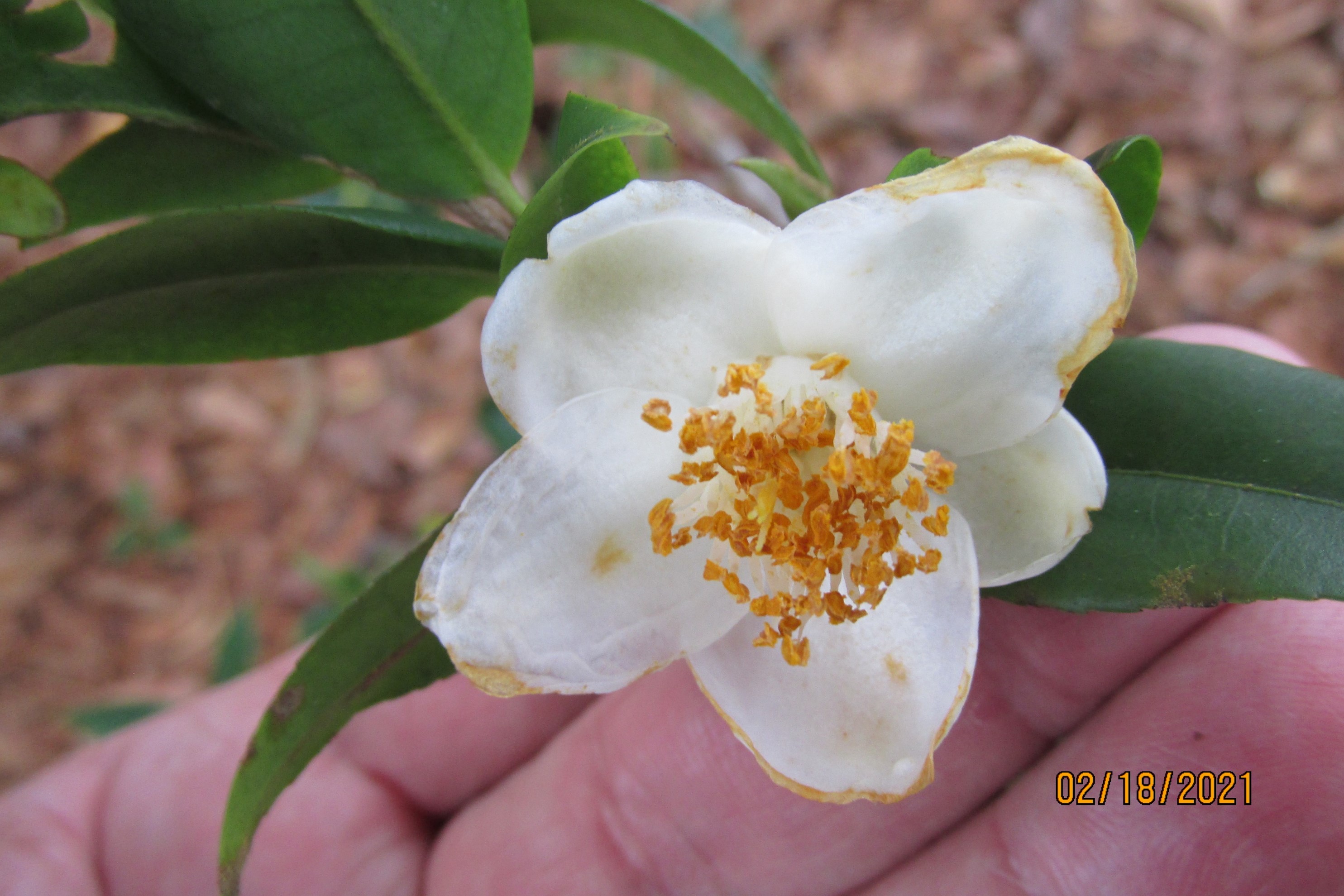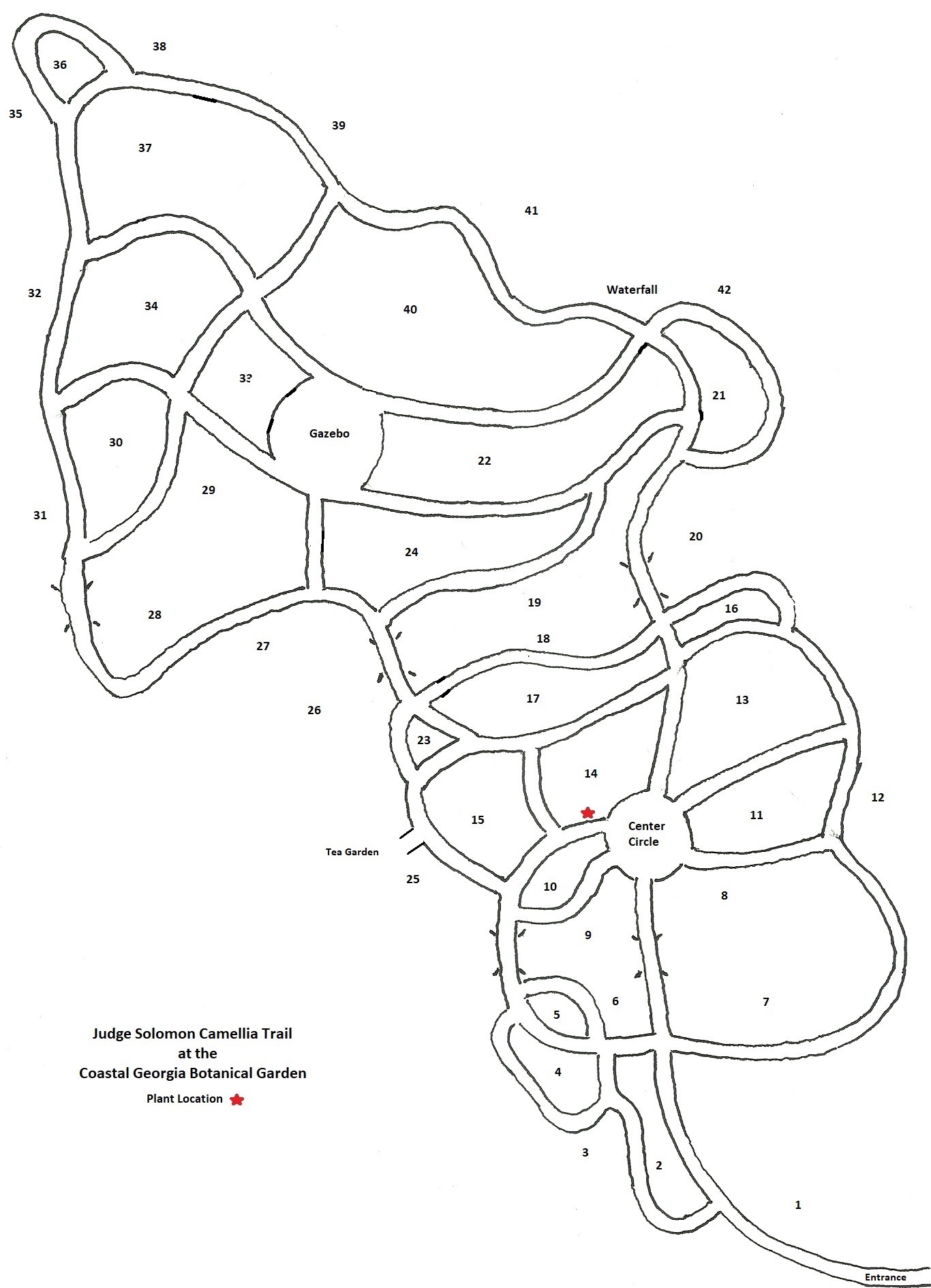Camellia longicarpa, Subgenus
Metacamellia, Sect. Theopsis, Ser. Gymnandrae Chang, Acta Sci. Nat.
Univ. Sunyatseni, monogr. ser. 1: 144. 1981. Chang
Hung-ta and Bruce Bartholomew (1984). Camellias,
p.181: Camellia longicarpa Chang ex Chang, sp. nov. ; Chang, Acta
Sci. Nat. Univ. Sunyatseni, monogr. ser. 1:154. 1981, nom. invalid. [Description] Tree
3 m tall; branchlets at first greyish-white pilose, soon glabrous.
Leavescoriaceous, elliptic, 6-8. 5 cm long, 2-3 cm wide, apices
acuminate or caudate with a 1-1.5 cm long cauda, bases broadly cuneate
or obtuse; greyish-brown above in the dry state, not shiny, midvein
brown-puberulent; base of the midvein pilose below; lateral veins7-9
pairs, equally conspicuous on both surfaces; upper half of margins
serrulate; petioles 3-4 mm long, hirtellous. Flowers terminal; pedicels
5 mm long, thick; bracts 5-6, 3 on the middle of the pedicel,
crescent-shaped, glabrous, margins thinlymembranous, 1-2. 5 mm long; 2-3
bracts relatively large, born near the sepals; calyxshallowly
cup-shaped, 5-6 mm long, glabrous, sepals semiorbicular,margins
thin; petals white, 6-7, outer 2 somewhat brownish-pubescent, 1. 5 cm
long, the remainingpetals 2 cm long glabrous; stamen length ca. equal
that of petals, outer filament whorlbasally connate into a tube; free
filaments shorter, glabrous; ovaries glabrous; stylelength equal to
stamens, shallowly 3-cleft. Capsules elliptic-ovate, 2. 5 cm long, 1. 5
cmwide, 3-locular or 1-locular, 1 seed per locule; valves woody, 1.5-2
mm thick. This species is close to C.
tsaii var. synaptica only
the calyx is much longer and notciliate, and the fruit is longer. The
species differs from C.
cuspidata by having pubescentbranches, filaments
connate into a short tube and fruit longer.
Gao Jiyin, Clifford R. Parks, Du Yueqiang, 2005, Collected Species of
the Genus Camellia an Illustrated Outline,p.248. Flowers are white,
fragrant, 3.0-4.0 cm in diameter, borne at the tips of shoots. Pedicels
4-5 mm long, thick. Bracts 5-6, glabrous. Sepals 5, glabrous, margin
membranous. Petals 6-8, 1.5-2.0 cm long, ovate to round, slightly
pubescent on back surface, slightly united from the base with the
staminal column. Androecium glabrous, about 2 cm long, outer stamens
mostly fused into a tube. Gynoecium about 1 cm long, 3 styles, slightly
cleft at the tip, ovary glabrous. Blooming season: later summer to early
autumn. Capsules ovoid, 2.5 cm long, 1.5 cm wide, 3 locules, pericarp
woody, 1.5-2.0 mm thick. Leaves elliptic, tip acuminate or caudate, base
broadly cuneate,6.0-9.0 cm long, 2.0-3.0 wide, upper half of margins
serrulate, upper surface with veins slightly impressed, midrib
puberulent, lower surface with veins raised, base of midrib pubescent.
Petioles 3-5 mm long, pubescent. Shrub or small tree up to 3 m tall,
shoots pubescent, becoming glabrous. Distribution: Under forest canopy
in ravines in the provinces of Sichuan and western Hunan; Elevation:
500-1,700 m; Specific locality: Emei Mountain, Sichuan Province, China.
|
|
|
|


